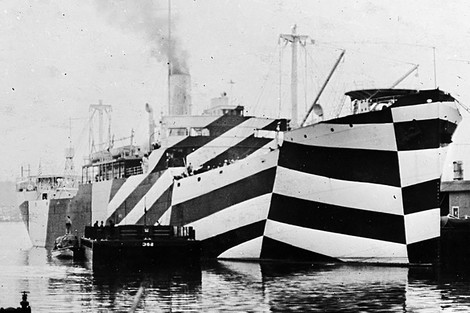Your podcast discovery platform
Curious minds select the most fascinating podcasts from around the world. Discover hand-piqd audio recommendations on your favorite topics.

piqer for: Global finds Technology and society Health and Sanity
Nechama Brodie is a South African journalist and researcher. She is the author of six books, including two critically acclaimed urban histories of Johannesburg and Cape Town. She works as the head of training and research at TRI Facts, part of independent fact-checking organisation Africa Check, and is completing a PhD in data methodology and media studies at the University of the Witwatersrand.
'A Flock Of Sea-Going Easter-Eggs': The WWI Army Camouflage That Dazzled
It was perhaps the most unlikely naval decor scheme for a country at war: bold broken stripes, curves, and zig-zags, rendered in black and white, bright blues, green, and even fuchsia ... This was Razzle Dazzle, the unusual 'camouflage' invented in 1917 by artist and British naval officer Norman Wilkinson during the First World War.
Wilkinson's camouflage idea had been prompted by the devastation wrought by the German navy's U-boats. Faced with a seemingly unbeatable new and deadly submarine technology, traditional military camouflage techniques — that attempted to hide or disguise objects within a landscape — had become ineffective. Rather than hide the British navy's ships, Wilkinson suggested a scheme that would instead attempt to disrupt it, confusing the naked eye with disjointed lines and patterns so that it became difficult to distinguish the front from the back of the ship, or even which direction the vessel was traveling. The pattern itself also added an element of surprise, literally 'dazzling' the enemy viewer.
Before the end of the war, over 2,000 British ships and 1,000 American navy ships were painted in Razzle Dazzle, with designs often supplied and supervised by artists. Although there was no evidence the camouflage was particularly successful, experts determined that there was no disadvantage to the paint jobs and — more importantly — that the brilliant patterns had a significant boosting effect on the morale of the crews on painted ships.
Razzle Dazzle eventually fell out of use because of the high cost of maintenance, and with the advent of radar technology that made such visual deceits less important. But, as this JStor Daily article (featuring a collection of scholarly papers on Razzle Dazzle) shows, the scheme has retained an important place in art, design and cultural history.
